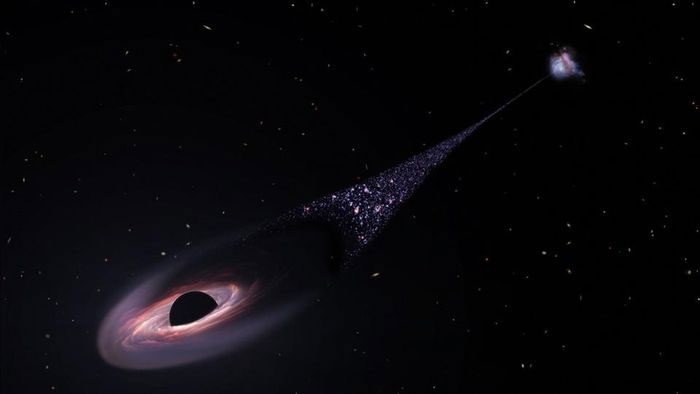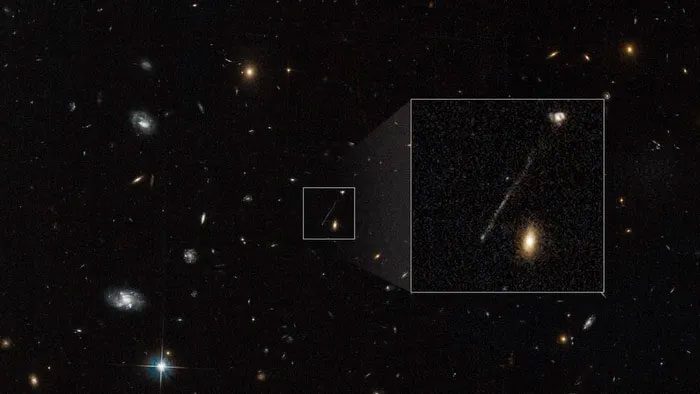The NASA Hubble Space Telescope has accidentally captured a “runaway” supermassive black hole speeding through space, leaving a trail of stars twice the length of the Milky Way.
Astronomers have detected a black hole traveling through interstellar space at a speed of 5.6 million km/h (over 4,500 times the speed of sound). If it were located within the Sun, this black hole could travel from Earth to the Sun in just 14 minutes, according to NASA.

Illustration of the black hole creating a star trail. (Image: NASA).
The research team discovered the black hole while using the Hubble Space Telescope to observe the RCP 28 dwarf galaxy, located about 7.5 billion light-years from Earth. This black hole may have been ejected from its home galaxy by two other black holes and is now wandering through interstellar space.
The study published in the Astrophysical Journal Letters on April 6 states that instead of devouring stars, the black hole is moving quickly, creating a star trail over 200,000 light-years long. This trail emanates from the center of a galaxy, where supermassive black holes are typically found.
Researchers believe that gas may be shocked and heated by the black hole’s motion, or it could be radiation from an accretion disk surrounding the black hole.

Image of the unusual star trail captured by the Hubble Telescope. (Image: NASA).
“We think we are witnessing a formation behind the black hole, where gas cools down and may form stars. We are closely observing star formation following the black hole,” said Pieter van Dokkum, a researcher at Yale University.
“I was just scanning through Hubble images and noticed a small streak. I thought it was a cosmic ray hitting the camera. But when we removed the cosmic rays, we realized the bright streak was still there. It’s unlike anything we have seen before,” he added.
<pNoticing the anomaly, van Dokkum and his team conducted spectroscopic observations with the WM Keck Observatory in Hawaii. He described the star trail as “quite astonishing, very, very bright, and very unusual.”
Researchers will conduct follow-up observations with NASA’s James Webb Space Telescope and the Chandra X-ray Observatory to confirm the black hole’s interpretation.
The upcoming NASA Nancy Grace Roman Space Telescope will provide clearer insights into the universe and may discover unprecedented star trails.





















































